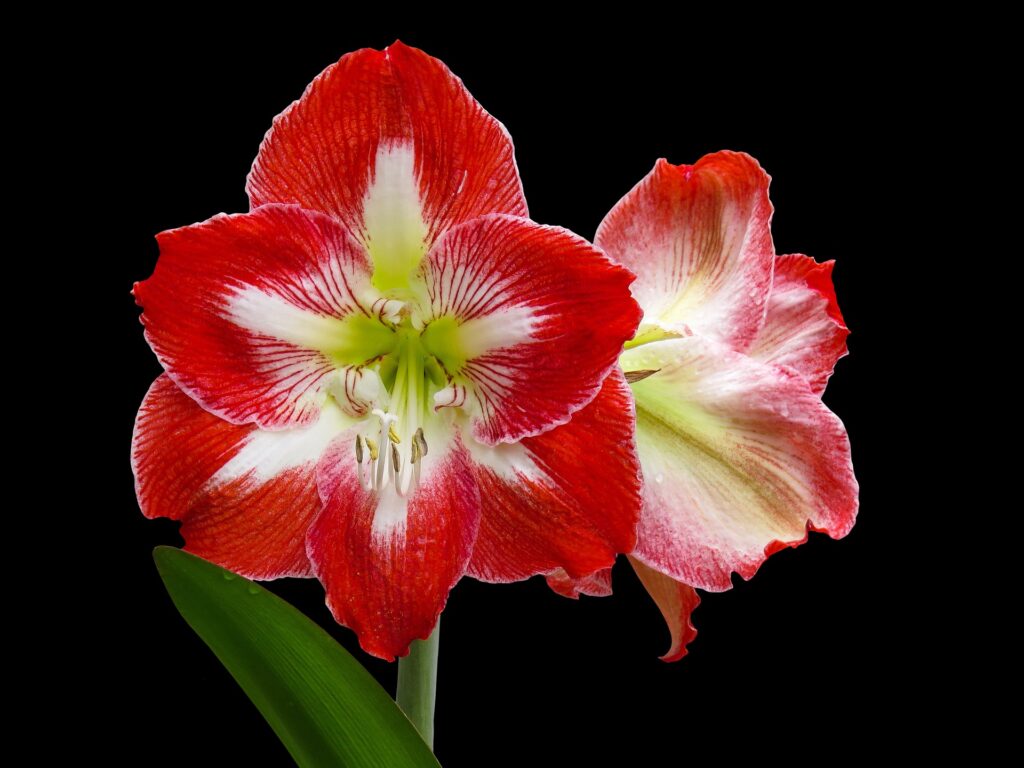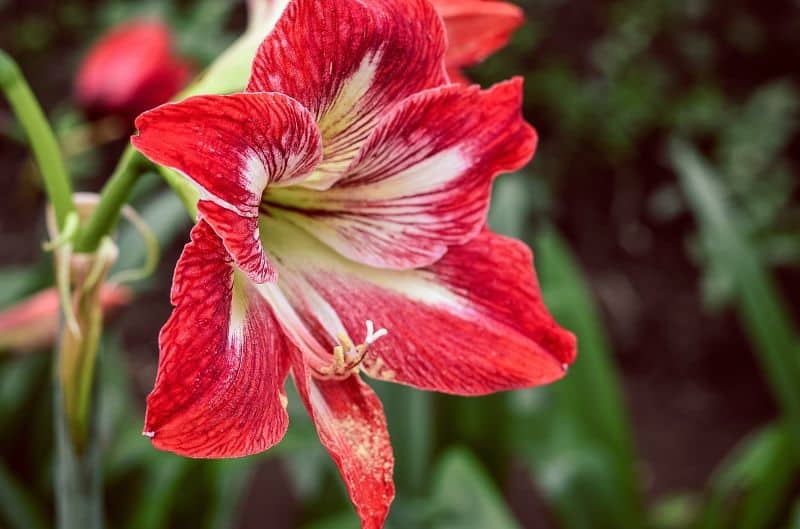Amaryllis, with their stunning blooms and elegant stature, have long been a favorite among indoor gardeners and floral enthusiasts. Their vibrant flowers and ease of care make them a popular choice, especially during the holiday season when they bring a touch of cheer to homes across the globe.
But just how long do these beautiful plants live, and what can you do to ensure they thrive for as many years as possible? In this blog post, we will explore the lifespan of amaryllis, the factors that influence their longevity, and best practices for care.
Lifespan of Amaryllis

The lifespan of an amaryllis plant can vary significantly depending on how it is cared for and the environment in which it grows. Generally, when grown indoors, an amaryllis can live anywhere from 3 to 10 years or more. Each bulb can produce flowers for several consecutive years if cared for properly. Here’s a breakdown of factors influencing their longevity.
Factors Influencing Amaryllis Longevity
1. Bulb Quality
The lifespan of amaryllis begins with the quality of the bulb. High-quality bulbs that are large, firm, and free from blemishes or soft spots tend to have a longer lifespan and produce more robust flowers. When purchasing amaryllis bulbs, look for reputable suppliers to ensure you’re getting the best quality.
2. Care Routine
Proper care is paramount for ensuring the longevity of your amaryllis. This includes:
Watering: Amaryllis bulbs need to be watered appropriately. Over-watering can lead to bulb rot, while under-watering can lead to stunted growth. The general rule is to water when the top inch of the soil is dry.
Fertilization: Feeding your amaryllis during the growing season with a balanced fertilizer can enhance growth and flower production. Typically, a diluted, water-soluble fertilizer every 4-6 weeks during spring can support their health.
Sunlight: Amaryllis thrive in bright, indirect sunlight. Too much direct sunlight can scorch their leaves, while too little light can inhibit blooming.
3. Dormancy Cycle
Amaryllis go through a natural dormancy period, typically in late summer or early fall, after their blooming phase. Understanding and facilitating this dormancy is crucial for long-term health. During this time, it’s essential to stop watering and allow the bulb to rest. This rest period is vital for rejuvenating the bulb and ensuring it produces flowers in the following growing season.
4. Repotting and Soil Quality
Repotting an amaryllis bulb every few years can significantly affect its health and longevity. Over time, the soil can become depleted of nutrients or compacted, which can hinder root growth and moisture retention. When repotting:
Choose a pot that is only slightly larger than the current one; amaryllis prefer being somewhat root-bound.
Use fresh, well-draining potting mix, ideally one designed for bulbs or cacti to prevent waterlogging.
5. Pest and Disease Management
Like any plant, amaryllis can be susceptible to pests (such as aphids and spider mites) and diseases (like fungal infections). Keeping an eye on the health of your plant and addressing any issues promptly can help extend its life. Regularly inspect the leaves and bulbs for signs of trouble and treat accordingly with insecticidal soap or neem oil, and improve air circulation around the plant to prevent mold.
Caring for Your Amaryllis for Longevity
Initial Planting
When you first receive your amaryllis bulb, follow these steps for optimal health:
Choosing the Right Pot: Select a pot that is deep enough to accommodate the bulb’s growth but not too wide. A pot with drainage holes is essential to prevent water from pooling.
Planting Depth: Place the bulb in the pot with the pointed end facing up. Cover the bottom half of the bulb with soil, leaving the top half exposed. This helps the bulb breathe and prevents rotting.
Watering: After planting, water the bulb lightly to settle the soil. Avoid soaking the bulb to prevent rot.
Transitioning to Dormancy
As mentioned, once the flowering phase is complete (typically 6-8 weeks after blooming), you’ll enter the dormancy period. Here’s how to handle it:
Stop Watering: Once blooming has finished, gradually reduce watering. After a few weeks, stop entirely. This allows the foliage to die back naturally, and the bulb to store energy for the next growth cycle.
Foliage Care: Do not cut off the leaves prematurely. The leaves are essential for the process of photosynthesis, allowing the bulb to gather energy. Once the leaves turn yellow and die back, it’s time to remove them.
Storage: If you live in a warmer climate and are growing your amaryllis outdoors, you might leave them in the ground during dormancy. However, if they are in containers, you should take the pots indoors or place them in a cool, dark location to facilitate dormancy. A temperature range of 50 to 60°F (10 to 15°C) is ideal.
Preparing for Reflowering
After 6 to 8 weeks of dormancy, your amaryllis will begin to show signs of new growth. Here’s how to prepare it for reflowering:
Repotting: If it’s been a couple of years since you last repotted, consider doing it now. Use fresh soil and a pot that’s only a size larger than the old one.
Watering: Start watering your amaryllis again, but do so gradually. Ensure the soil remains moist but not soggy.
Light Conditions: Move your amaryllis back to a bright location, ideally one that receives indirect sunlight. This encourages strong, healthy growth.
Fertilization: As growth resumes, begin fertilizing with a balanced fertilizer every few weeks, just as you did during the last growing season.
Dealing with Common Problems
Even with the best care, you may encounter issues with amaryllis. Here’s how to address some common problems:
Yellow Leaves: This might indicate over-watering or poor light conditions. Make sure the plant gets enough light and adjust your watering schedule accordingly.
No Blooms: If your amaryllis refuses to flower, it may need more light or food. Also, ensure it has had a proper dormancy period.
Wilting: Wilting usually results from under-watering or heat stress. Make sure the plant is well-hydrated and not in direct scorching sunlight.
Propagation of Amaryllis
While growing a few amaryllis bulbs can be satisfying, you might wonder if you can propagate them for a more extensive collection. Here are the main ways amaryllis can multiply:
1. Offsets
Amaryllis bulbs can produce smaller bulbs, known as offsets, around their base. These can be carefully separated and planted in their pots. For best results:
Wait until the offsets are about one-third the size of the parent bulb before separating them.
Replant the offsets in well-draining soil, and care for them as you would mature bulbs.
2. Seeds
Although not a common method for home gardeners, amaryllis can be grown from seeds. This method is more time-consuming and requires a controlled environment. If you are interested:
Allow some flowers to mature into seed pods.
Once the pods are dry, harvest the seeds and plant them in a sterile soil mix.
Keep the soil consistently moist and warm until germination occurs.
Typical Lifespan and Ongoing Care
Referring back to the question of how long amaryllis live, many experienced gardeners have reported bulbs thriving for over a decade or more with adequate care. The key points for ensuring your amaryllis remains healthy and vibrant include:
Regular inspections for pests and diseases.
Maintaining an optimal watering schedule.
Implementing a balanced fertilizer routine.
Observing and respecting the dormancy cycle.
Remember that each bulb will have its unique lifespan, influenced by the care it receives. Healthy bulbs with robust, fat structures are typically a sign of longevity. As your amaryllis matures and blooms year after year, it will also become a sentimental part of your home or garden, making the effort worthwhile.
Seasonal Considerations
As seasons change, so do the needs of your amaryllis. Here are some seasonal care tips:
Spring and Summer: These are the active growth months. Focus on providing ample light, water, and nutrients. You can also bring your amaryllis outdoors for the summer months if desired, allowing it to grow more robustly.
Fall: As days grow shorter, begin to reduce watering while preparing for dormancy. A sign that dormancy is approaching is the yellowing of leaves.
Winter: Encourage blooming by keeping the plant in a well-lit area and providing adequate care leading up to the holiday season.





